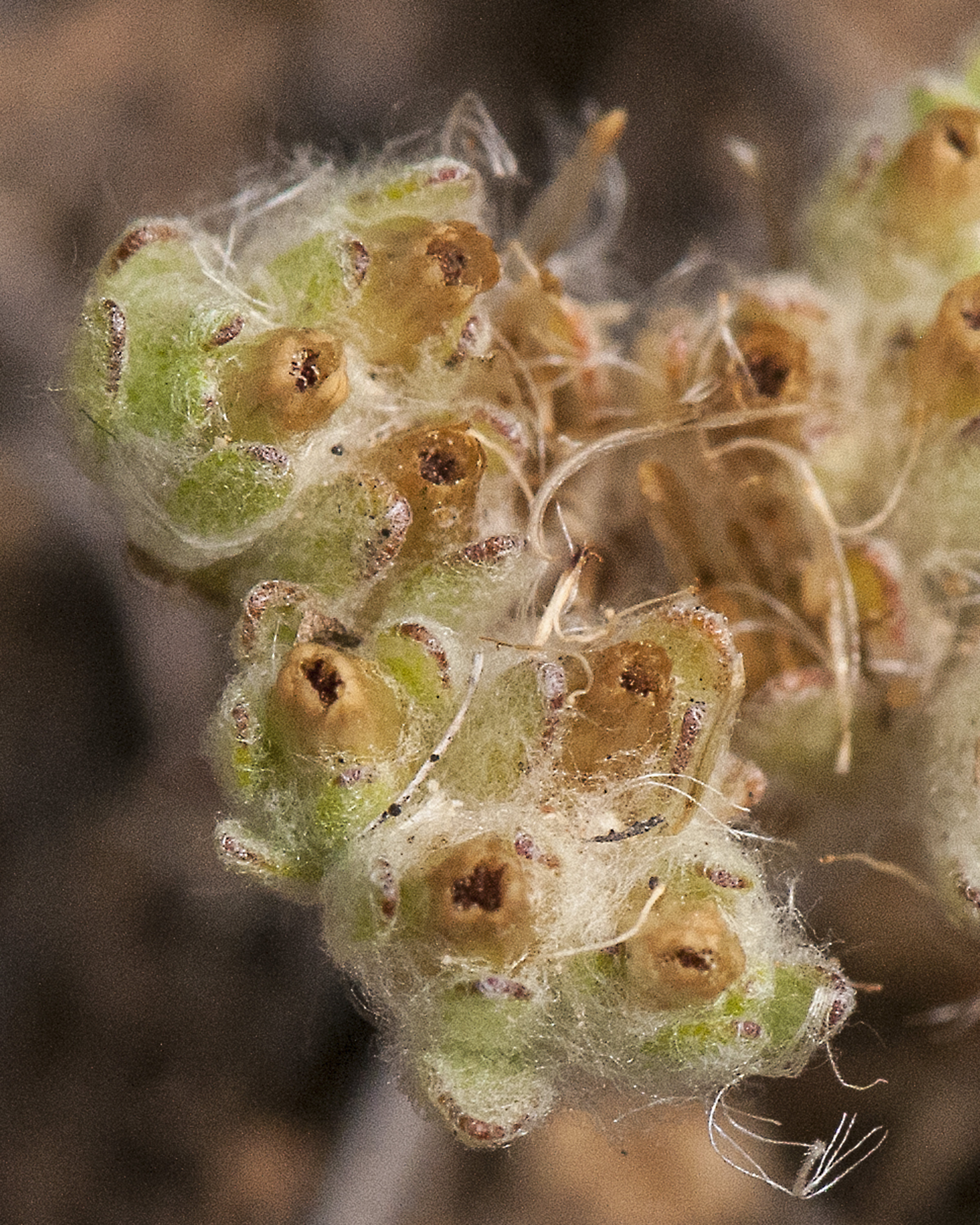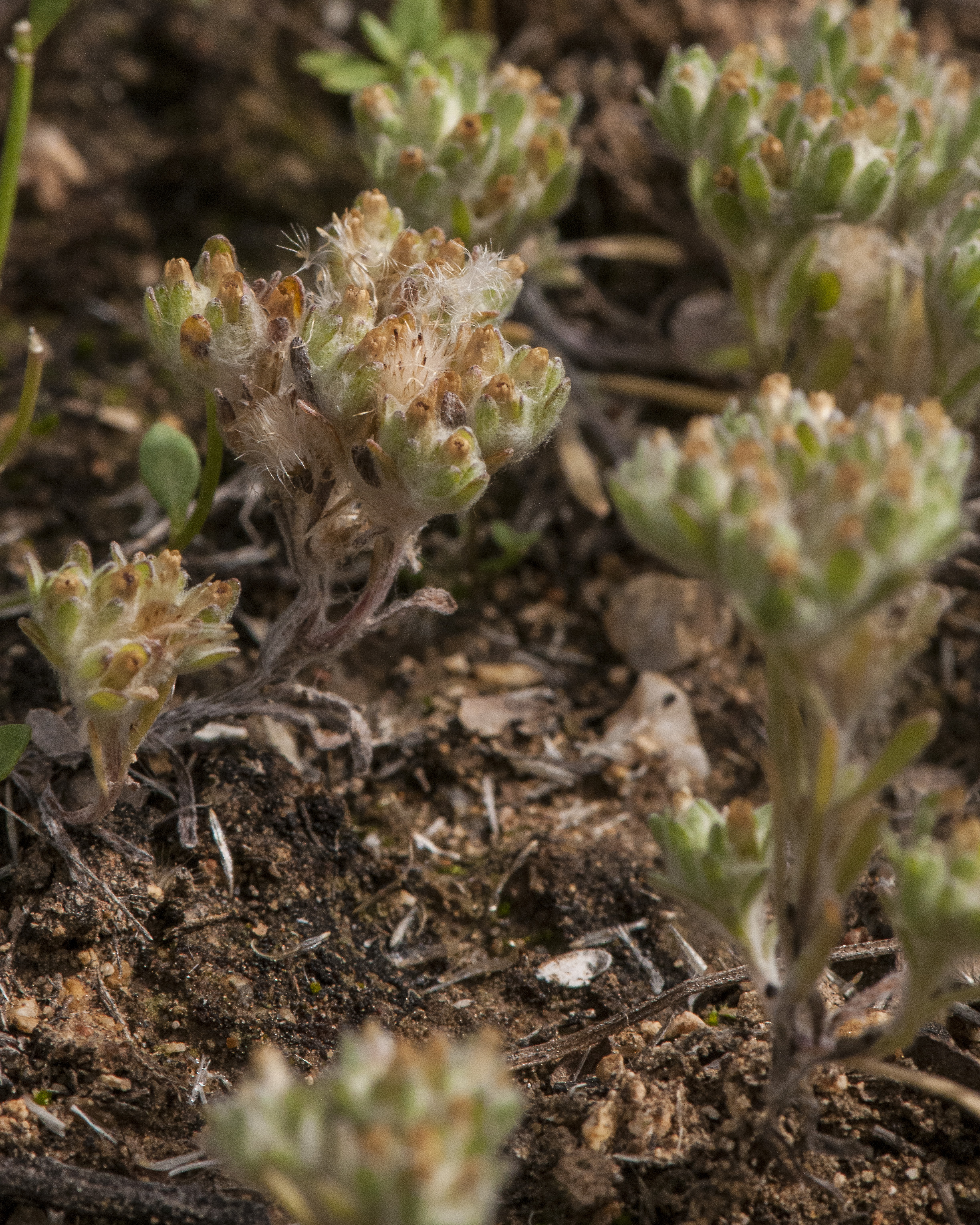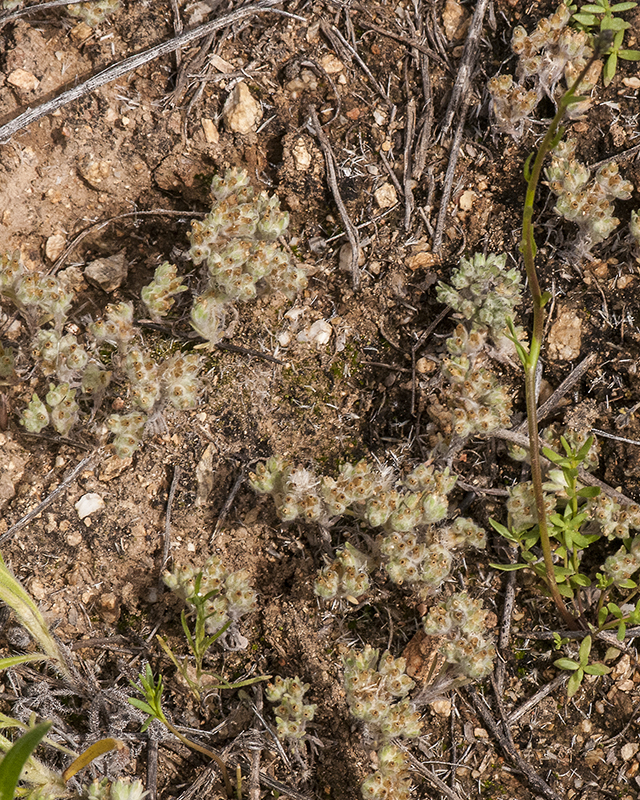Wildflowers of Southern Arizona
Western Marsh Cudweed.
Gnaphalium palustre
Aster (Asteraceae) family.
Duration: Annual. Nativity: Native. Lifeform: Forb/Herb. General: Low annual, commonly much branched at base with erect or ascending stems 10-25 cm long, herbage loosely floccose-lanate. Leaves: Wool persistent on stems but often more or less deciduous from spatulate to linear-spatulate leaves, these 5 mm wide and 3 cm long but usually smaller, uppermost ones subtending and exceeding heads, usually lanceolate to oblong. Flowers: Heads in dense subglobose glomerules at tips of branchlets, each 2-3 mm high, involucral bracts deeply embedded in loose wool, only scarious tips showing, scarious part usually obtuse, often denticulate; flowers and pappus bristles about equaling longer involucral bracts; pappus falling separately or in groups. Fruits: Cypselae 0.45-0.55 mm, papillate. Ecology: Found along streams, grassy plains and on valley floors from 1,000-5,000 ft ( 305-1524 m); flowers March-October. Distribution: Alberta and British Colombia, CAN; south through NM, AZ, and CA, to Baja California, MEX. Notes: Diagnostics for this plant are the heads clustered at the tips of the stem and branches and the loosely floccose-woolly herbage. Etymology: Gnaphalium is derived from the Greek gnaphalon, a lock of wool, and palustre means growing in marshes.
Santa Catalina Mountains
Sabino Canyon Recreation Area
Location: Bank of Cholla Wash 30 feet from Bear Canyon Trail
2/13/19
IDd by Debbie Bird
See SEINet Pictures and Description




